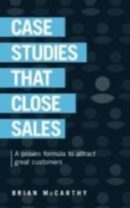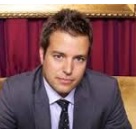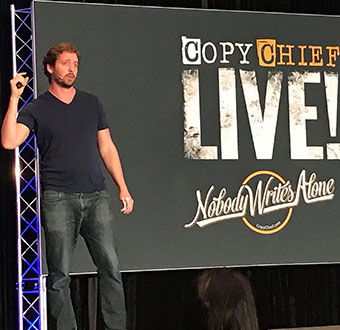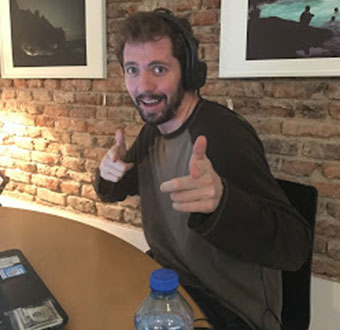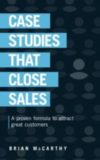Sit right back and you’ll hear a tale, a tale of a fateful split test.
That started from this tropic port aboard Agora’s mighty list.
The writer was a mighty marketing man.
The skipper brave and sure.
Two sales letters set sale that day for a three-hour tour.
A three-hour tour…
 That’s right, we got Gilligan’s Island jokes today!
That’s right, we got Gilligan’s Island jokes today!A former Agora writer I used to work with told me a story of a sales page split test.
They both had same exact lead. One had updated and kick-ass body copy. The other had old, outdated body copy.
Know what happened?
Nothing. Pimping the hell out of the body copy didn’t move the needle at all.
This was lesson #10,0830,098 in the history of direct marketing proving that your body copy does not matter nearly as much as your LEAD.
Most people already know headlines are insanely important. But those first 150 words or so make a massive difference as well.
Either you bury your hooks deep enough so your reader can’t look away…
Or you bore them into deciding they should go watch old Monty Python sketches instead of reading more.

Every few years I go on a big Monty Python binge. Last week, it happened again.
But the lead can be one of the hardest/scariest parts to write. It’s just you, a blank page, and a zillion ideas of what to say floating through your head. And you don’t know where to start.
There’s also all those different rules for copywriting you’ve read about — but you’re not sure which ones apply here. Do you start with a story? A big promise? Something else?
That’s a problem I’ve wrestled with a lot. So to make my life easier I went ahead and read a book last week by a top copywriter/marketer/business badass called Great Leads
It’s fantastic. Here’s the Cliff Notes version on how to get focused on the exact lead that’s right for you.
First, you’ve got to know your customer’ss level of awareness.
This is a concept made famous 50 years ago by Eugene Schwartz. He gave a spectrum of 6 levels of awareness, which are:
1. Most Aware: Your prospect knows your product, and only needs to know “the deal.”
2. Product-Aware: Your prospect knows what you sell, but isn’t sure it’s right for him.
3. Solution-Aware: Your prospect knows the result he wants but not that your product provides it.
4. Problem-Aware: Your prospect senses he has a problem, but doesn’t know there’s a solution.
5. Completely Unaware: No knowledge of anything except, perhaps, his own identity or opinion.
So what’s this mean for you?
Before writing your sales page, you want to know how aware your customers are of you and your offer.
The type of lead you use depends on their awareness level.
For level 1, you can use a PRODUCT LEAD. That is, simply introduce what you have for them.
Your customer is like someone walking into a hardware store looking for nails. The sales person doesn’ t have to do anything except take them to where the nails are.
For your lead, all you’ve got to do is introduce that wonderful thing you have. Your sales page will be much shorter because you’re really just educating them on your product.
For level 2, you need a bit more to convince them. So you’ll want to use a PROMISE LEAD.
Give them a “reason why” they should buy your product by making it clear what it’ll do for them.
Make your promise big and life-changing. You may have to scale it back a little of your promise is too unbelievable, but non-asshole marketers and business owners (which are the people on this list) generally suffer from making their promises too small. So don’t be afraid to go big with your promise (then back it up.)
Remember the golden rule of promises: Never make a promise bigger than your proof.
Level 3 requires even more education/selling.
You’ve got to prove your product can solve their problem. Which means showing you understand their problem.
So the lead to use here is the PROBLEM-SOLUTION LEAD. Start with the burning pain they face and show how your product can help ease it.
(Note: This lead can also work for level 2. With 5 stages of awareness and 6 lead types, there’s a little bit of overlap)
Level 3 and 4 require more selling still. So a great lead to use there is the SECRET LEAD.
You don’t have to use the word “secret” in the headline or lead. But the idea is to introduce a mysterious and intriguing “thing” that helped you/others get the same results the reader wants.
Probably the most famous example is “The Secret of A One Legged Golfer Adds 50 Yards to your Drive, Eliminates Hooks and Slices…”
Another way to hint at a secret is by giving your technique/method a name. “How nerds all over the world are using “The Spilled Hot Sauce” technique to date beautiful women”. That’s 1,000% made up but you get the idea.
Basically, you’re promising a benefit through forgotten knowledge, a recent discovery, an unusual method, a little-known secret, etc. Telling the story behind it then gives you a chance to build trust, desire, prove your claims, etc.
Levels 4-5: THE PROCLAMATION LEAD
Here’s a description of this kind of lead from the book:
“The proclamation lead begins with an emotionally-compelling statement, usually in the form of the headline. And then, in the copy that follows, the reader is given information that demonstrates the validity of the promise made.”
I used this lead last week in a sales letter. We were giving away survival/self-defense information to cold traffic that didn’t know us and didn’t have any immediate need.
So I had to show a massive potential problem to prove they needed what we had. And I did this through a proclamation about an “enemy” that wants to destroy America and can easily do so by knocking out the power grid. Which would send us back to the stone age.
Now that’s not a problem on the top of these people’s mind. Because I’m basically selling to Trump supporters and their fears about the end of the world have gone down now that their guy is in office.
So I had to make this declaration about an upcoming disaster, then load the lead copy with quotes from high-ranking experts saying how we’re vulnerable to this kind of attack and how devastating it would be.
You see these kinds of leads a lot in survival/finance — statements about how the price of gold will rise, or the economy will collapse, then more copy proving the point and eventually leading towards the sale.
Level 5 part 2
When you’re selling to cold traffic and your reader has no idea who you are, the problem they face, or that there are solutions to this problem, then a great lead to use is the STORY LEAD.
Think of someone stumbling into the personal development market for the first time. They don’t know anything about the market and don’t even know they have a problem. They have a general sense of dissatisfaction with their life but haven’t yet become fully aware of this problem yet! (They think their problem is thier job or relationship or not having enough money, etc.)
You can’t talk about the problem or benefits yet because they’re not aware of the problem or looking for those benefits. So you’ve got to rope them in with a thrilling story. Perhaps a story describing their exact situation, what they thought the problem was, what they learned the real problem was, and what they did to finally find happiness.
My favorite example of a story lead is the Digital Romance Language of Desire sales video. (This video has made millions and millions in sales.)
People aren’t necessarily aware that “talking dirty in bed” is a major problem for them. So they start the sales page with a story of a woman who feels utterly humiliated when her husband asks her to do just that and she can’t.
Now the key to a good story lead is to start at the most interesting part of the story. Don’t start in the beginning — that’s boring and nobody cares. Start when bodies are hitting the floor, people are screaming at each other, etc.
Movies do this all the time. The Usual Suspects starts with a boat blowing up. James Bond always starts with a thrilling chase scene. Not him sitting at home and getting a call from M and having meetings about his next job.
Alright, that’s it for today.
Hopefully, this will provide some clarity next time you need to write a sales page.
Instead of having a thousand ideas float in your head, figure out where your customers are on the awareness scale and go with the lead that works best for them.
At the very least, it’ll get you to write that “dirty first draft” which then makes it easier to figure out what you really want to say and what will resonate best with your audience.
If you got any questions or want me to take a look at your lead and give you feedback let me know. My email is Brian [@] Thepdcopywriter [dot] com. Happy to help.
Stay gold.

